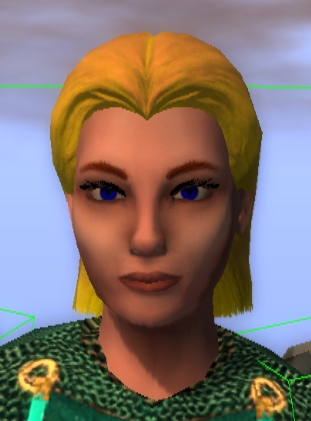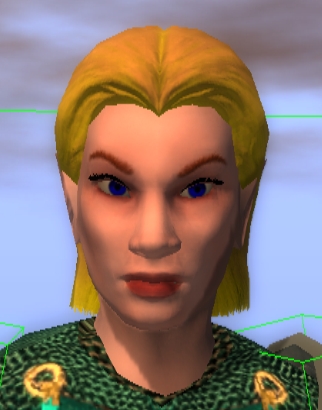I’m posting this blog entry mainly to solicit feedback on a major dilemma that I now find myself facing, with regard to the development of Sanctum of the Archmage II. That dilemma is whether to continue with my decision to develop the first act of the sequel in Neverwinter Nights 2, or to go back to developing it in Neverwinter Nights 1.
I was initially very impressed with Neverwinter Nights 2 in January when I got my new computer and played through the OC. I was wildly enthusiastic about the possibility of scripting with parameters (those of you who don’t code, trust me: that’s a big deal), with the improved graphics and terrain modeling, and with many of the design improvements that I saw in the engine. And since it seemed to me that the future of Neverwinter Nights lay in the sequel, rather than in NWN1, I decided that making the switch early would be a good idea.
I also heard (and saw, as I started trying to learn it) a great deal about the instability of the toolset. I was horrified at the almost uniformly grotesque head models, the full-body underwear, and the elimination of 2D portraits and cinematic cutscenes. Many of the armor models had bizarre hard-coded tints that could not be changed in the toolset. And the initial palette of creatures and models did seem a bit light. But I also knew that I wasn’t going to be able to get to work in earnest on Sanctum II until May or so because of my schedule. And by then, I reasoned, most of these issues would have started to be addressed and new and custom content would start appearing for the game. In the meantime I could work on planning, and on fully fleshing out the plot for the three acts of the sequel.
Now that May is here (indeed, almost over) and that planning work is done, I’ve had to take a sober look at these expectations. And what I’ve seen hasn’t given me a sense of confidence about the prospect of being able to build the first act of Sanctum II in NWN2 — not in a way that I will be satisfied with as a builder.
The NWN2 toolset seems to be crashing less than when I first started using it, but there are still widespread bugs. For example, the item-related 2DA files have actually spawned a whole host of “Bad Strref” entries since the 1.04 patch. I haven’t lost any work due to corrupted mod files, thank goodness, but I’m still seeing posts from other builders who are reporting this. And unless I’m completely confused about where to to look, the NWN2 models sections of the vault show next to nothing in the way of new creature and placeable content. This was a huge surprise to me, since NWN1 had a robust community of modelers (such as the CEP Team) that were regularly developing such resources for the game.
After doing some digging this morning, though, I think I’m beginning to understand some of the reasons for this. Apparently, Obsidian used a proprietary 3D modeling and animation system for NWN2 called “Granny.” From what I’ve been able to gather, Granny offered certain benefits in terms of performance and ease of development — but at the price of a proprietary format for which there are no available converters for commonly used modeling programs like 3DSMax. A prospective modeler could, of course, buy a copy of Granny — starting, I believe, at around $12,500 for a single machine license. Perhaps not surprisingly, that hasn’t turned out to be a particularly viable option for the cadre of amateur 3D modelers who had previously been turning out so much excellent work for the Neverwinter Nights community.
As a result, and from what I can see, there are few to no new creature and placeable models for NWN2, even now eight months after release of the game and much longer after the appearance of the pre-release toolset. There has been widespread clamor for a “granny plugin” from Obsidian that will finally make this modeling work possible, and they appear to be working hard to provide one in the relatively near future. If it works well, that will be a real breakthrough that should liberate and empower custom modelers to start creating new models for NWN2.
But that work will almost certainly come too late for me to make any use of for Sanctum II, Act I, since I have to start making progress on the sequel now. And this has put me in something of bind with regard to some of the content that I need to make Act I work. Wasting half a day today unsuccessfully trying just to re-create the “Control Rod” from Sanctum I — a simple, unadorned black rod held in the left hand — brought me up short about the harsh realities of this. Here’s a partial list of the creatures and models that I want or need for the sequel that I currently cannot find or create in NWN2:
– The Beastmen. They return and play an important role in Sanctum II, Act I. The closest thing I can find to them in the NWN2 toolset are bugbears.
– Hand-held wands and rods. The player acquired several of these in Chapter 1. None of the wand or rod models from NWN1 seem to have made it into NWN2.
– Demons. Demons play a central role in Sanctum of the Archmage, and not surprisingly, there are a number of major battles with them in Sanctum II. NWN1 and CEP between them gave a wide selection of fiendish outsider models to choose from. NWN2, by contrast, has Balor, a Hezrou, a Succubus, and a couple of devils. I could probably make do with these, but that isn’t a whole lot of variety from which to construct an army of demons that are overrunning the kingdom.
– Pegasi. The elven pegasus warriors play an important role throughout all three acts of Sanctum II. From what I can gather, there aren’t even any horses available in NWN2, much less winged ones.
For these reasons and others, I’m now seriously considering returning to building in NWN1 until NWN2 matures more as a modding environment. There is no question that the development of Sanctum II Act I will go much faster if I do this, even if it does mean scrapping much of the preliminary work that I’ve already done in the NWN2 toolset. And I could always port Act I to NWN2 later on. I really would rather move to NWN2 now, but I can’t shake the conviction that the considerations I’ve described here are too important to set aside and just “hope for the best” by sticking with NWN2, at least for the first act. (As a former manager of mine used to put it: “Hope is not a course of action.”)
This is a decision I have to make now. So the question I wanted to solicit feedback from my fellow players and builders on is: what do you think? Am I overreacting, and are the prospects for NWN2 maturing sufficiently in the couple of months or so better than my currently pessimistic mood would indicate? Or would going back to NWN1 be a sober decision based on an assessment of the current realities of modding with NWN2?

